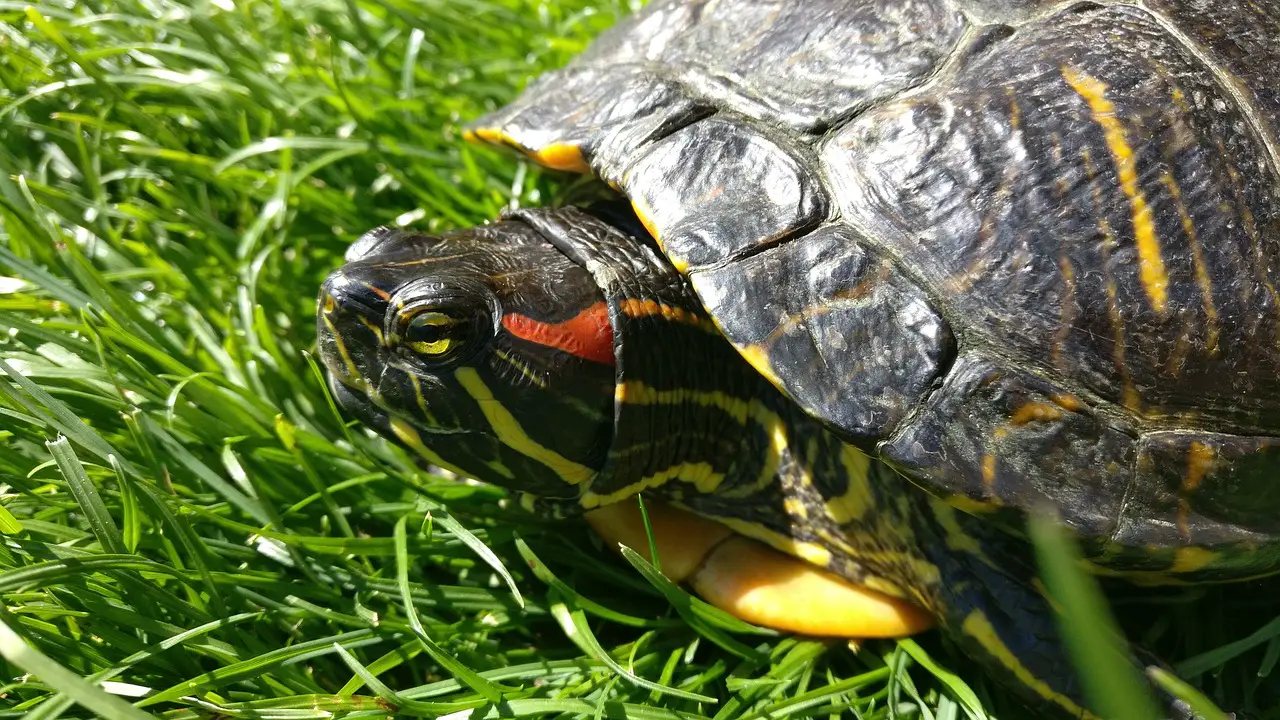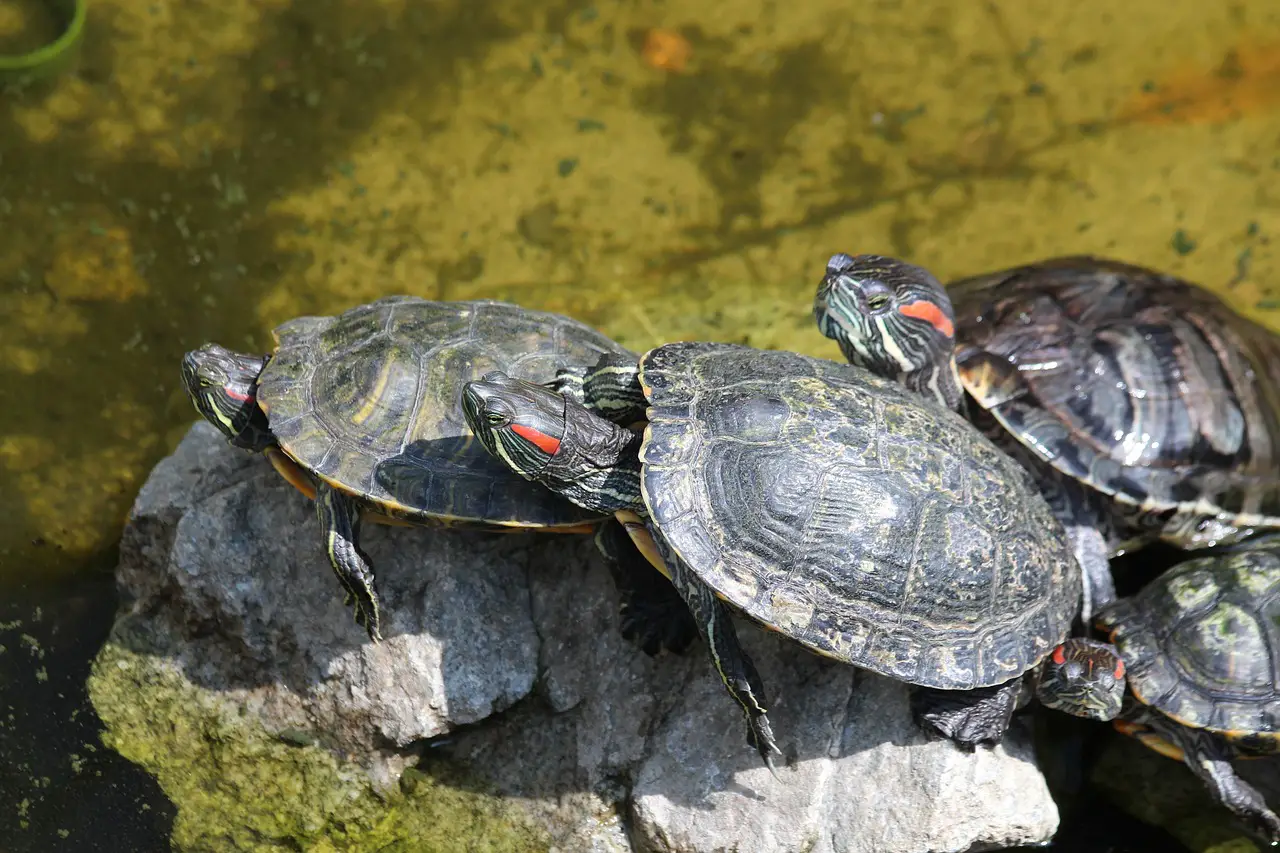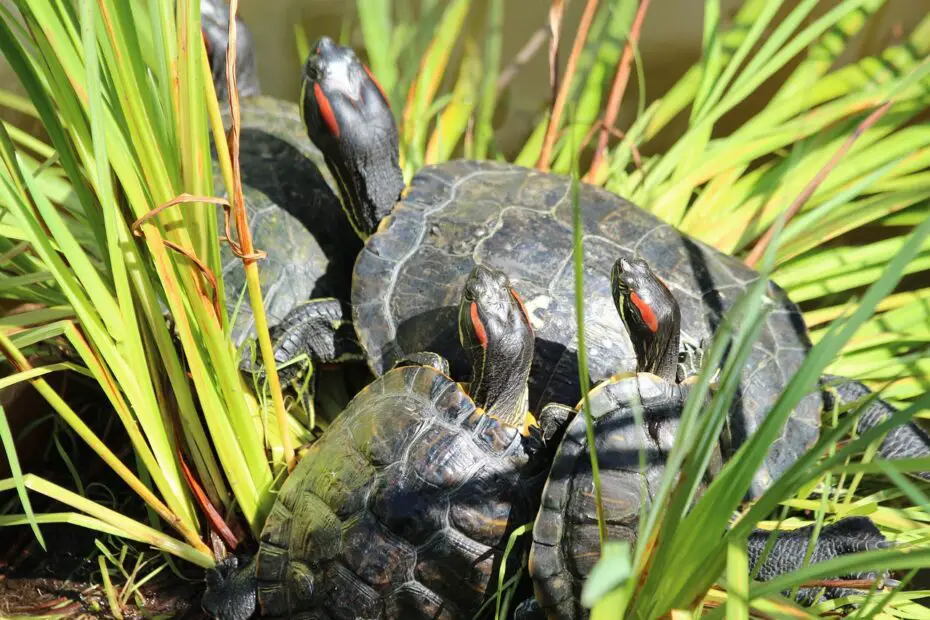Feeding your red-eared slider (Trachemys scripta elegans) a balanced and nutritious diet is vital for its overall health and well-being. In this article, we will explore the red eared slider food, discuss appropriate food options, feeding frequency, and provide helpful tips to ensure your turtle receives the best nutrition possible.
You may also want to know how to treat turtle shell rot.
Understanding Red-Eared Sliders
Red-eared sliders are a popular species of aquatic turtle known for their vibrant coloration and distinctive red patch behind each eye. These turtles are omnivorous, meaning they consume both plant matter and animal protein. Providing a varied diet is essential to meet their nutritional needs and promote their growth and development.
Dietary Requirements
To maintain optimal health, red-eared sliders require a balanced diet that includes:

Red Eared Slider Food: Commercial Turtle Pellets
Commercial turtle pellets are a convenient and essential part of a red-eared slider’s diet. Look for high-quality pellets specifically formulated for aquatic turtles. These pellets are fortified with essential nutrients and vitamins necessary for their growth and immune system function.
Red Eared Slider Food: Fresh Vegetables and Fruits
Including fresh vegetables and fruits in your turtle’s diet is crucial for providing essential vitamins, minerals, and fiber. Offer a variety of leafy greens such as kale, collard greens, and dandelion greens. Additionally, incorporate vegetables like carrots, bell peppers, and squash. Fruits like strawberries, melons, and apples can be given as occasional treats.
Protein Sources
Red-eared sliders require a source of animal protein to meet their dietary needs. Offer protein-rich foods such as earthworms, mealworms, crickets, and small fish. Cooked chicken or lean meats can also be provided as an occasional protein source.
Calcium and Vitamin Supplements
Calcium is essential for maintaining strong bones and preventing metabolic bone disease. Dusting the turtle’s food with a calcium supplement specifically formulated for reptiles is important. Additionally, vitamin supplements designed for turtles can be provided according to the manufacturer’s instructions.
Feeding Frequency and Portions
Red-eared sliders should be fed daily when they are young, gradually transitioning to feeding every other day as they mature. The amount of food offered should be proportional to the turtle’s size, with portion sizes that can be consumed within 15 to 20 minutes. It’s important not to overfeed as obesity can lead to health issues.
Feeding Tips and Tricks
- Observe your turtle’s eating habits to ensure it is consuming an appropriate amount of food.
- Provide a separate feeding container to prevent excess food debris in the main tank.
- Offer a variety of food items to promote a diverse diet and stimulate natural foraging behaviors.
- Ensure all food items are appropriately sized to prevent choking hazards.
- Offer food in different ways, such as floating food sticks or using food clips, to cater to your turtle’s feeding preferences.
Foods to Avoid
Certain foods should be avoided when feeding your red-eared slider. These include:
- Processed human foods high in salt, sugar, or preservatives.
- Dairy products as turtles are unable to digest lactose.
- Toxic plants, such as azaleas or rhododendrons.
- Raw or undercooked meats that may contain harmful bacteria.

Monitoring Eating Habits
Regularly monitor your turtle’s eating habits and appetite. Sudden changes in eating patterns or a lack of interest in food could be indicators of health issues. If you notice any concerns, consult with a reptile veterinarian for further guidance and evaluation.
Hydration and Water Quality
Proper hydration is crucial for red-eared sliders. Ensure your turtle has access to clean, chlorine-free water at all times. Maintain appropriate water temperature and filtration to keep the environment healthy for your turtle.
Feeding FAQs
1. Can red-eared sliders eat lettuce? While lettuce contains some water content, it lacks essential nutrients. It is best to opt for nutrient-rich leafy greens like kale or collard greens instead.
2. Can red-eared sliders eat fish? Yes, red-eared sliders can consume small fish as part of their protein intake. Ensure the fish are appropriate for their size and do not contain bones.
3. How often should I offer calcium supplements? Follow the manufacturer’s instructions for calcium supplement frequency, typically a few times a week. However, it is essential to provide a balanced diet alongside supplements.
4. Can red-eared sliders eat insects? Yes, red-eared sliders can eat insects like crickets and mealworms as a protein source. Make sure the insects are appropriately sized for your turtle.
5. Can I hand-feed my red-eared slider? Hand-feeding can be done occasionally to establish trust and bond with your turtle. However, it is important to use clean hands and avoid overfeeding.
Conclusion
Feeding your red-eared slider a nutritious and varied diet is key to maintaining its health and happiness. By incorporating a combination of commercial turtle pellets, fresh vegetables and fruits, protein sources, and supplements, you can provide a well-balanced diet that meets your turtle’s needs. Remember to monitor their eating habits, provide clean water, and consult with a reptile veterinarian if you have any concerns. Enjoy the rewarding experience of caring for your red-eared slider and witnessing its growth and vitality.
